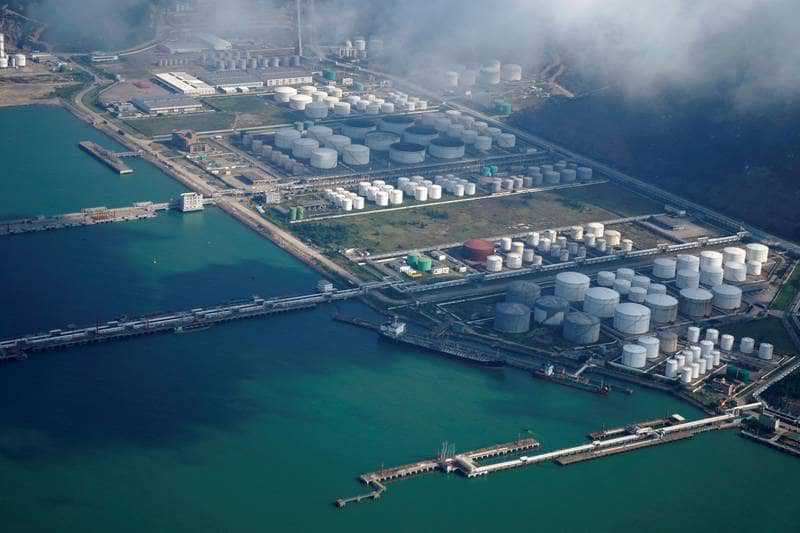Oil prices close 2% higher but decline for second week as countries release more stock

Collected Image
Oil prices settled 2 per cent higher at the close of trading on Friday but lost for a second consecutive week after International Energy Agency member nations and the US announced plans to release more crude from their strategic stockpiles.
Futures for Brent crude, the global benchmark for two thirds of the world's oil, closed $2.20 or 2.19 per cent higher at $102.78 a barrel. West Texas Intermediate, which tracks US crude, climbed $2.23 to $98.26. The price of Brent decreased to $99.92 per barrel in early trading on Friday, the first time it hit the double-digit mark since mid-March.
For the week, Brent slid 1.5 per cent and WTI dropped 1 per cent. The benchmarks have been at their most volatile period since June 2020 in the past several weeks owing to Russia's military offensive in Ukraine. The conflict has caused crude prices to soar, with Brent peaking at $129.38 a barrel on March 6. The market is also keeping an eye on China. The world’s largest importer of oil is in the middle of a new wave of Covid-19 infections, leading to concerns on waning consumption that is weighing on oil prices.
“Crude prices have stabilised as the announcement of the co-ordinated stockpile release and China’s demand destruction driven sell-off has run its course. Rising rig counts, however, are being met with labor shortages and that will delay some crude production increases in the US,” Ed Moya, a senior market analyst at Oanda, said in a note. “The oil market is still tight, but if China’s lockdowns have no end in sight, crude prices could still weaken by another 3 to 5 per cent.”
The IEA's stockpile release, announced on Thursday, includes 120 million barrels of oil, half from the US and half from other members. This is in addition to the US releasing 120 million barrels from its Strategic Petroleum Reserve, which brings the total to 240 million barrels worldwide.
The commitment is the largest from the 31-member nations in the agency’s 47-year history.
“The unprecedented decision to launch two emergency oil stock releases just a month apart, and on a scale larger than anything before in the IEA’s history, reflects the determination of member countries to protect the global economy from the social and economic impacts of an oil shock following Russia’s aggression against Ukraine,” said Fatih Birol, the executive director of the IEA.
“This latest collective action once again demonstrates the unity of IEA member countries in their solidarity with Ukraine and their determination to provide stability to the oil market during this challenging time. Events in Ukraine are becoming more distressing by the day, and action by the IEA at this time is needed to relieve some of the strains in energy markets.”
Futures for Brent crude, the global benchmark for two thirds of the world's oil, closed $2.20 or 2.19 per cent higher at $102.78 a barrel. West Texas Intermediate, which tracks US crude, climbed $2.23 to $98.26. The price of Brent decreased to $99.92 per barrel in early trading on Friday, the first time it hit the double-digit mark since mid-March.
For the week, Brent slid 1.5 per cent and WTI dropped 1 per cent. The benchmarks have been at their most volatile period since June 2020 in the past several weeks owing to Russia's military offensive in Ukraine. The conflict has caused crude prices to soar, with Brent peaking at $129.38 a barrel on March 6. The market is also keeping an eye on China. The world’s largest importer of oil is in the middle of a new wave of Covid-19 infections, leading to concerns on waning consumption that is weighing on oil prices.
“Crude prices have stabilised as the announcement of the co-ordinated stockpile release and China’s demand destruction driven sell-off has run its course. Rising rig counts, however, are being met with labor shortages and that will delay some crude production increases in the US,” Ed Moya, a senior market analyst at Oanda, said in a note. “The oil market is still tight, but if China’s lockdowns have no end in sight, crude prices could still weaken by another 3 to 5 per cent.”
The IEA's stockpile release, announced on Thursday, includes 120 million barrels of oil, half from the US and half from other members. This is in addition to the US releasing 120 million barrels from its Strategic Petroleum Reserve, which brings the total to 240 million barrels worldwide.
The commitment is the largest from the 31-member nations in the agency’s 47-year history.
“The unprecedented decision to launch two emergency oil stock releases just a month apart, and on a scale larger than anything before in the IEA’s history, reflects the determination of member countries to protect the global economy from the social and economic impacts of an oil shock following Russia’s aggression against Ukraine,” said Fatih Birol, the executive director of the IEA.
“This latest collective action once again demonstrates the unity of IEA member countries in their solidarity with Ukraine and their determination to provide stability to the oil market during this challenging time. Events in Ukraine are becoming more distressing by the day, and action by the IEA at this time is needed to relieve some of the strains in energy markets.”
Source: https://www.thenationalnews.com
Tags :
Previous Story
- GCC economies set to grow at fastest pace...
- Why intelligent government action is needed to solve...
- 2022 budget returns Saudi Arabia to surplus for...
- Adnoc Logistics & Services and AD Ports to...
- Deyaar’s third-quarter net profit surges nearly 81% on...
- Inflation concerns to test Indian central bank's easy...
- Moody’s revises Saudi Arabia’s outlook to stable on...
- Business activity in Arab world's two biggest economies...